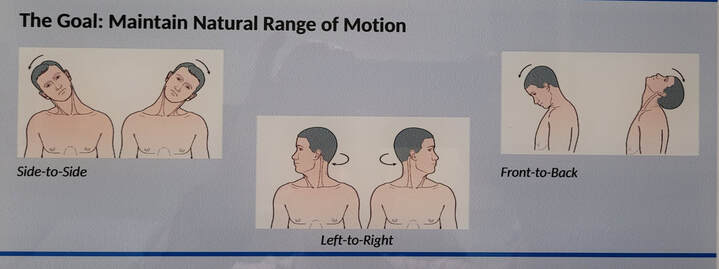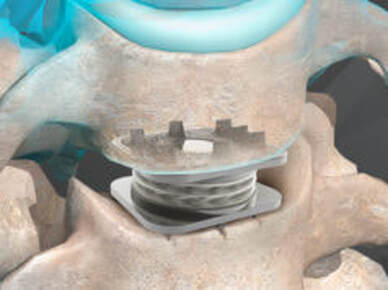Things you should know about Disc Replacement Surgery:Disc replacement surgery is growing in popularity, but there is still a lot of misinformation out there, and it’s sometimes hard to figure out what facts are FACTS! Here are five things that you should know about disc replacement surgery before you have any operation on your spine: 1. Disc replacement surgery and disc arthroplasty surgery are the same thing. Also referred to as an “artificial disc” the implants used in these surgeries are designed to preserve motion in the spine after a discectomy (removal of the disc) and they have been shown to maintain motion and reduce the likelihood of degeneration at adjacent levels of the spine, something that often occurs in the years following a fusion. They are recommended for patients aged 18 – 70 years, but I, and other surgeons, have had excellent success in selected patients over the age of seventy. 2. Artificial discs are placed in the neck or back through the front of the spine (an anterior approach) after a damaged disc has been surgically removed to treat neck or back pain associated with radicular pain – the arm or leg pain caused by a “pinched” nerve. In the neck, this is the same approach we use for most disc surgeries, but in the lumbar spine the approach is often assisted by a vascular surgeon to limit the risk to the large vessels and other important structures in the abdomen. 3. Disc arthroplasty implants have been in development for over 40 years and have been available for patient care for nearly 2 decades. There are implants specifically designed for the cervical spine (neck) and for the lumbar spine (lower back). They have very specific applications – treatment of degenerated or herniated discs in otherwise healthy patients. There are no discs designed for the thoracic spine, and they are not intended to treat fractures, infections, scoliosis, or spondylolisthesis. And you can’t undo an old fusion and put in an artificial disc later! 4. Artificial disc replacement can be carried out as an outpatient surgery, and utilizes many minimally invasive techniques, but it is not “minor surgery”. When it comes to the spine, nothing is! The importance of surgeon experience and skill is reflected in the careful diagnosis and plan for treatment, and the skillful approach and placement of the implant. Surgeon experience with disc replacement procedures is important to the outcome here. Ask. 5. Disc replacements last a long time. How long? We don’t really know, because – unlike artificial hips and knees – we haven’t seen any of the ones we use today wear out. I’ve seen a suggestion that they will last 70 years, but that’s pure speculation! We have had the opportunity to observe patients in Europe who have had disc implants in place for 35 years without failures. And I have followed my own patients for more than 18 years without seeing any cases where the disc has worn out or deteriorated. There have been over 150 peer-reviewed publications of long-term trials and studies of total disc replacements, including investigational FDA trials, long-term follow-up studies, and large multicenter studies to ensure the safety and effectiveness of these implants. These studies have shown that, when used for the correct indications in the right patients, disc arthroplasty can provide significant advantages over traditional fusion procedures. They are not experimental or investigational, and their effectiveness is proven.
So, if you’ve been told you need to have a neck fusion, or a lumbar spine fusion, it’s ok to ask “is there another way to do this?”. You can learn more about disc replacement surgery, and other types of spine surgery and treatment, by checking out more sections of this website, or find me on Linkedin or Facebook at Robert McLain MD. Thanks!
5 Comments
Maria
2/28/2023 02:43:47 pm
Hello Dr. McClain,
Reply
Robert McLain
2/28/2023 05:14:53 pm
I can't comment on your specific condition without examining you as a patient, but what you are describing is pretty common. Injury to a cervical disc, and irritation of the facet joints often triggers pain and spasm in the paraspinous muscles - those that connect the head to the upper thoracic spine and scapulae. If that's the case, disc replacement can help alot.
Reply
This Blog Is Very Helpful And Informative For This Particular Topic. I Appreciate Your Effort That Has Been Taken To Write This Blog For Us. Radial head fracture treatment, Nursing diagnosis for head injury, Nursing management of head injury, head injury blood clot treatment, nursing management of head injury patient, medical management of head injury, surgical management of head injury, care of patient with head injury, forehead bump treatment, head injury surgery. <a href="https://curerehab.in/Head-Injury-Rehabilitation"> physiotherapy in Hyderabad </a>
Reply
Karey Chiasson
3/6/2024 03:11:21 pm
65yo female. Previous fusion C5,6-6,7 in 1995. No plates and screws,graft from my own iliac crest. Now need fusion C 4-5 per neurosurgeon. Would i be candidate for this disc replacement procedure?
Reply
6/13/2024 01:28:59 pm
Five Things You Should Know About Disc Replacement Surgery:
Reply
Leave a Reply. |
Details
AuthorI'm Dr. Rob McLain. I've been taking care of back and neck pain patients for more than 30 years. I'm a spine surgeon. But one of my most important jobs is... Archives
January 2024
Categories |



 RSS Feed
RSS Feed